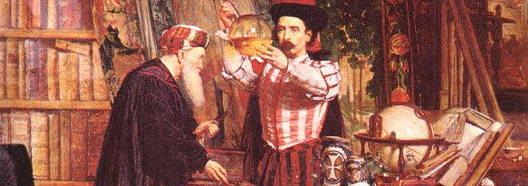Science Education Resources
At this website, I offer free use of all the Powerpoint lectures, notes outlines, worksheets, labs, and any other activities I have written in my ten years in science education. As someone who is certified to teach multiple subjects, I have experience in physics, chemistry, biology, and environmental science. I hope by sharing what I've learned and developed over this time that you and your students will have a great experience.
To begin, click on one of the subject areas in the menu to the left or read on...
Biology
Biology is the first subject that I became certified in, the first that I taught, and I still believe is one of the most difficult to teach. The sheer volume of information and vocabulary can be overwhelming. I've taught 9th grade general biology using the Holt Biology text, 11th grade low-level biology using the Miller and Levine "macaw" book, and an introductory course for a community college using Campbell Biology.
The course I use currently is a blend of all these. The resources are appropriate for all levels with a little adapting as needed. Click on the Biology link to begin browsing these resources.
Environmental Science
Environmental science was a difficult class to wrap my mind around at first. Coming from a background in biology, the structure and amount of vocabulary was simply not present in the texts that I previewed, including Holt, Miller, Cunningham, and Scientific American environmental science.
I first began truly appreciating the course when I looked at it as an interdisciplinary course -- one that had aspects of science, politics, ethics, and history.
Environmental science is often an elective class, often taken by students who do not qualify for or are intimindated by chemistry and physics. With this in mind, my course introduces the concepts gradually, providing a lot of historical and current issue context to give the students a reason why they should want to learn more. Click on the environmental science link to begin browsing these resources.
Chemistry
Chemistry is a fundamental science. Everything I teach can be traced back to chemistry. This course covers the very basics of inorganic chemistry, starting with nomenclature, moles, and chemical reactions and eventually culminating with stoichiometry, chemical bonding, heat, and gas behavior. Click on the chemistry link to browse these resources.
Anatomy & Physiology
Anatomy & physiology is a terrific culminating course that can tie together concepts learned in earlier science classes. Basic biology, chemistry, and even physics play a role in all the functions of the human body.
The course I use combines material from two Essentials of Anatomy and Physiology Texts: Marieb and Martini. Like biology, the amount of new concepts and vocabulary is nearly endless, but I tried to include some of the most important and essential ideas that are needed to understand how each of the systems of the body integrate to make us what we are.
Click on the anatomy & physiology link to begin browsing these resources.
